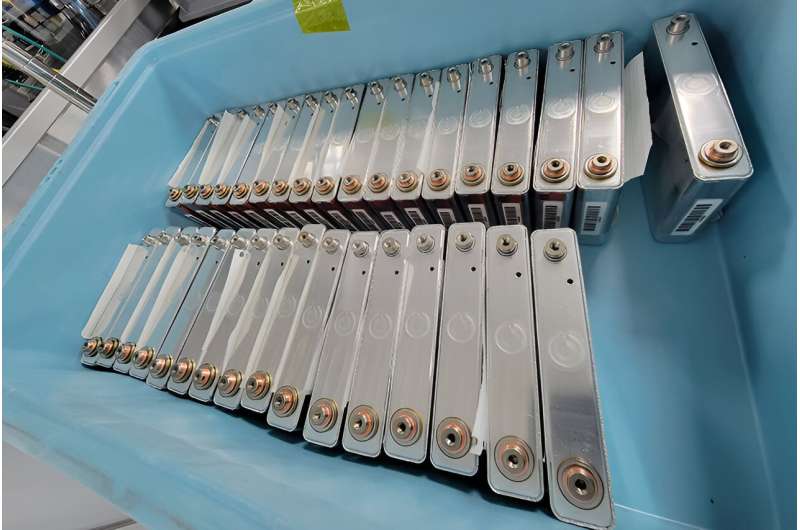
Gotham City’s Dark Knight boasts an impressive collection of technological marvels, but the superhero scientists at the U.S. Department of Energy’s (DOE’s) National Renewable Energy Laboratory (NREL) have cutting-edge capabilities of their own.
A recent battery manufacturing project—affectionately called BatMan—has developed a novel laser patterning process to alter the microstructure of battery electrode materials. The project brings together expert minds from NREL, Clarios, Amplitude Laser Group, and Liminal Insights. This revolutionized manufacturing process could unlock significant improvements to electrified transportation, leading the charge toward a brighter and more sustainable future.
“BatMan builds on NREL’s expertise using laser ablation, advanced computational models, and materials characterization to address key challenges in battery manufacturing,” said Bertrand Tremolet de Villers, project co-lead and senior scientist in NREL’s Thin Film and Manufacturing Sciences group.
“This new, high-throughput laser patterning process—demonstrated at scale with state-of-the-art roll-to-roll manufacturing techniques—uses laser pulses to quickly and precisely modify and optimize electrode structures, offering a massive leap in battery capabilities with minimal added manufacturing cost.”
Structural challenges signal need for innovation
Electric vehicles (EVs) have been identified as the single most important technology for decarbonizing the transportation sector, according to the International Council on Clean Transportation. However, estimates project that sales of EVs will need to reach up to 35% of the global market in 2030 to achieve net-zero greenhouse gas emissions by 2050.
In addition, the U.S. National Blueprint for Transportation Decarbonization cites EVs powered by clean electricity as a critical component of our nationwide strategy. Continued advancements in battery technologies can improve energy efficiency and accelerate customer adoption by enabling EVs to charge faster and drive further.
The secret to optimizing battery performance lies in the electrodes, positively and negatively charged conductors that generate an electrical current through the movement of ions. The material makeup, thickness, and structural design of electrodes can impact battery capacity, voltage, and charging speed.
For example, doubling the thickness of electrodes from 50 μm to 100 μm increases the energy density of a battery cell by about 16%. However, this increased thickness makes it notably more difficult to charge the battery quickly without causing long-term damage from lithium plating, which reduces the battery lifetime.
Thicker battery electrodes also introduce new concerns for battery manufacturers. After assembling battery cells, manufacturers begin the wetting process by injecting a liquid electrolyte into the cell to facilitate the flow of ions between electrodes.
Imagine the electrode as a dry sponge; during wetting, the liquid electrolyte must spread and absorb evenly into the solid surface. Inadequate wetting can impede ion transport, resulting in slower charging and discharging rates, lower energy density, and decreased battery efficiency. However, wetting is costly and time consuming, and the larger surface area of thicker electrodes could increase the complexity of this process.
The EV industry needs a breakthrough battery design that combines the benefits of thicker electrodes and extreme-fast charging, without increasing manufacturing costs. The BatMan research team is answering the call with a process that optimizes electrode structures and streamlines battery production.
























